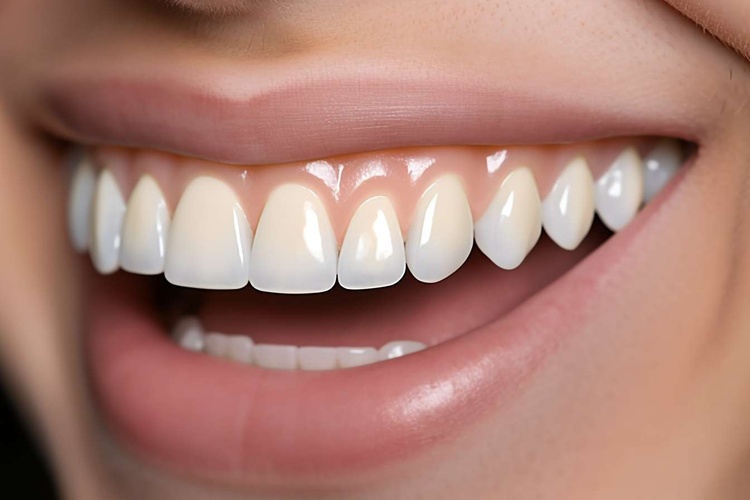What Are Screw-less Dental Implants? An In-Depth Guide for 2025
Screw-less implants can accelerate dental crown placement and improve the appearance of your front teeth. Discover when cement-retained implants are beneficial, potential risks such as inflammation, and why expert advice is vital for long-term oral health success.

How Are Screw-less Dental Implants Structured?
Dental implants generally consist of three parts:
- The implant screw: A titanium post surgically placed into the jawbone, serving as a root replacement.
- The abutment: Connects the implant screw to the visible crown.
- The crown (prosthetic tooth): The visible portion that resembles a natural tooth.
In traditional screw-retained implants, the abutment and crown are attached via a small internal screw, creating a screw-retained prosthesis. Screw-less implants keep the titanium screw anchored in the jawbone but remove the internal screw that secures the abutment and crown. Instead, dental cement or adhesive bonds the prosthetic parts tightly to the implant or abutment.
Thus, the term “screw-less” specifically describes the crown retention method rather than the complete absence of screws in the implant system.
Clinical Uses of Screw-less Dental Implants
Screw-less implants are typically chosen in specific clinical situations, including:
- Front (anterior) teeth or the “social six”: The six front teeth visible when smiling, where aesthetics are crucial.
- Limited space or angulation cases: When implant positioning or available space restricts the use of screw-retained abutments.
Because screw access holes on screw-retained implants may sometimes be visible on anterior teeth, screw-less implants can offer cosmetic advantages by providing a smooth surface free of access holes. However, screw-less dental implants are not universally preferred and are mainly considered when aesthetic concerns or anatomical issues indicate that cement retention may be advantageous.
Potential Advantages of Screw-less Dental Implants
Some possible benefits noted in clinical contexts for screw-less implants include:
- Reduced appointment time: Cement-retained crowns may occasionally be placed shortly after implant surgery, allowing faster provisional restorations.
- Simplified restoration procedure: Cement bonding does not require precise alignment of screw channels.
- Aesthetic improvements: The lack of screw access holes can enhance appearance, especially for front teeth.
It is crucial to recognize that treatment durations, expenses, and aesthetic results differ based on individual cases and clinical practice, and these factors should be discussed with dental experts.
Considerations and Risks Associated with Screw-less Implants
Screw-less dental implants present potential risks and challenges:
- Residual cement issues: Excess cement left under the gum after cementation can cause inflammation, soft tissue irritation, or peri-implant diseases, which may affect implant health.
- Maintenance challenges: Removing or adjusting a cemented crown can be more complex and potentially invasive compared to screw-retained prostheses, which can be unscrewed for repairs or cleaning.
- Long-term monitoring difficulties: Cement retention may complicate the detection and management of underlying problems over time.
- Quality control importance: Proper cement removal and fitting are essential; mistakes can increase complications.
Because of these issues, it is important for patients and clinicians to carefully weigh risks and plan appropriate follow-up maintenance.
Comparing Screw-less and Screw-retained Implants
Screw-retained implants remain widely used and preferred in many clinical settings because of several practical advantages:
- Ease of retrieval: Prosthetic crowns can be removed by unscrewing, facilitating repairs, hygiene, and detailed examination.
- Lower biological risk: The absence of dental cement eliminates risks linked to residual cement-induced inflammation.
- Esthetic and functional flexibility: Innovations such as angulated screw channels (ASCs) allow screw access holes to be positioned to reduce visible esthetic impact while maintaining retrievability.
ASCs permit screw channels to be angled up to 30 degrees from the implant axis, helping to minimize visible screw holes, especially in restorations of front teeth. This advancement narrows the functional and cosmetic differences between screw-retained and cemented implants.
Clinical studies also indicate that screw-retained prostheses may have lower rates of biological complications and easier maintenance, though mechanical concerns like screw loosening require attention.
Patient Eligibility and Important Factors to Consider
Candidates for screw-less dental implants generally should meet the following criteria:
- Adequate bone quality and volume: Enough jawbone for stable implant anchorage.
- Healthy gum tissue: Minimal inflammation to lower peri-implant disease risks.
- Suitable clinical indication: Usually recommended for anterior teeth or cases with restricted space or complex angulation.
- Informed decision-making: Patients should understand possible difficulties related to crown removal and cement-related risks.
Patients with complex bite patterns, posterior tooth replacements, or higher hygiene demands may find screw-retained implants more appropriate.
Treatment Process and Cost Factors
- Treatment duration: Screw-less implants may enable shorter early treatment periods in some cases, allowing quicker provisional restorations.
- Cost considerations: Initial treatment may sometimes be less costly than staged screw-retained implant protocols; however, long-term maintenance expenses can vary.
- Follow-up care: Cemented restorations require close monitoring to detect and manage excess cement or tissue inflammation.
- Long-term financial impact: Repair or complications associated with cement use may influence overall costs.
Patients are encouraged to consult their dental professionals to assess initial and long-term aspects based on individualized treatment plans.
Trends and Professional Guidance in 2025
While screw-less dental implants continue to be employed in some dental settings—especially those prioritizing quick treatment and cost-efficiency—many dental specialists in regulated markets still favor screw-retained implants enhanced with modern technology like angulated screw channels. Current professional guidance generally emphasizes:
- Long-term implant functionality
- Simplified maintenance
- Reduction of biological complications
over purely cosmetic concerns. Patients interested in screw-less implants should consult experienced implant dentists to evaluate their specific oral health needs and treatment goals.
Key Points About Screw-less Dental Implants
- Screw-less implants secure the crown using dental cement instead of internal screws, while retaining a titanium implant screw anchored in the jawbone.
- They may offer aesthetic benefits for front teeth and the possibility of faster provisional restoration placement.
- Cement-retained restorations carry risks related to residual cement and possible inflammation.
- Maintenance and removal of cemented crowns can be more complicated than with screw-retained options.
- Technological advances, such as angulated screw channels, improve the aesthetics and function of screw-retained implants.
- Patients should engage in detailed discussions with qualified dental professionals to select the treatment best suited for their long-term oral health objectives.
In 2025, screw-less dental implants remain a viable option in implant dentistry, to be used selectively after careful evaluation of their benefits and risks.
Sources
- Maida Smiles - The Truth About Screwless Dental Implants
- Marylebone Implant Centre - Can You Get Screwless Dental Implants?
- Straumann - Advances in Screw-Retained Prosthesis
https://maryleboneimplantcentre.co.uk/can-you-get-screwless-dental-implants/
Disclaimer: All content, including text, graphics, images and information, contained on or available through this web site is for general information purposes only. The information and materials contained in these pages and the terms, conditions and descriptions that appear, are subject to change without notice.




